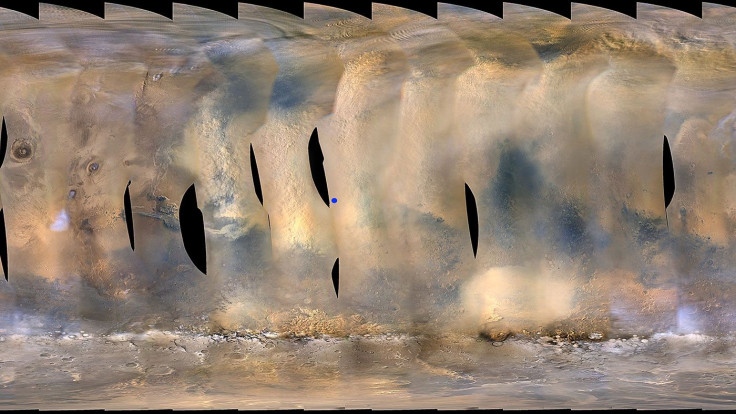NASA Holds Off Opportunity Rover Operations Amid Massive Dust Storm On Mars

An intense dust storm brewing on the surface of Mars has prompted NASA to suspend the science operations of its Opportunity rover, which has been active on the red planet since 2004, for the time being.
The storm, which has been growing bigger over the last week, was first spotted on June 1 by the space agency’s Mars Reconnaissance Orbiter. The team handling the orbiter, aka MRO, witnessed how close it was to the robotic rover and alerted the teams concerned to take immediate action.
As the rover team prepared the contingency plan to deal with the situation, the storm grew more intense than expected. According to a release from the agency, on June 8, it spanned more than North America, covering a whopping 7 million square miles (18 million square kilometers) area on the planet. This included Perseverance Valley or the site where Opportunity had been conducting science operations.
Though the storm didn’t have any direct effect on the rover, the dust swirling around did create a slight problem for the machine. It increased the atmospheric opacity in the region, creating a smog-like situation where most of the sunlight gets blocked out.
Opportunity uses solar panels to convert sunlight into energy and power its batteries, but over these days, it couldn’t get the required light to stay up and running. It’s power levels had dropped significantly by June 6, leading the agency to hold its scientific work for some time and use the remaining energy only for basic and most essential operations.
According to the agency, dust storms like the one Opportunity faces at present are not surprising but infrequent on Mars. They can start out of nowhere and continue for days or maybe even months. NASA believes these storms mainly occur during southern summers when solar heat warms up dust particles, lifting them higher in the atmosphere and creating wind, which in turns picks up more dust and creates what the agency describes as a feedback loop.
That said, if such weather exists for long and the skies don’t clear up in time, there could be a risk to the rover due to extreme cold on Mars — the phenomenon that led to the loss of Opportunity’s twin back in 2010.
However, it is worth noting that this is not the first storm Opportunity is facing. Back in 2007, a much larger storm covered the entire planet. The agency had to switch to two weeks of minimal operations and cut off contact with rover for days in order to save power. The team handling the operations thought it won’t be able to maintain a balance between low power and energy-intensive heaters designed to protect its batteries from the Martian cold. But the skies cleared up and Opportunity, which was built to last 90, survived. It has operated more than 50 times longer than NASA originally planned.
© Copyright IBTimes 2024. All rights reserved.





















